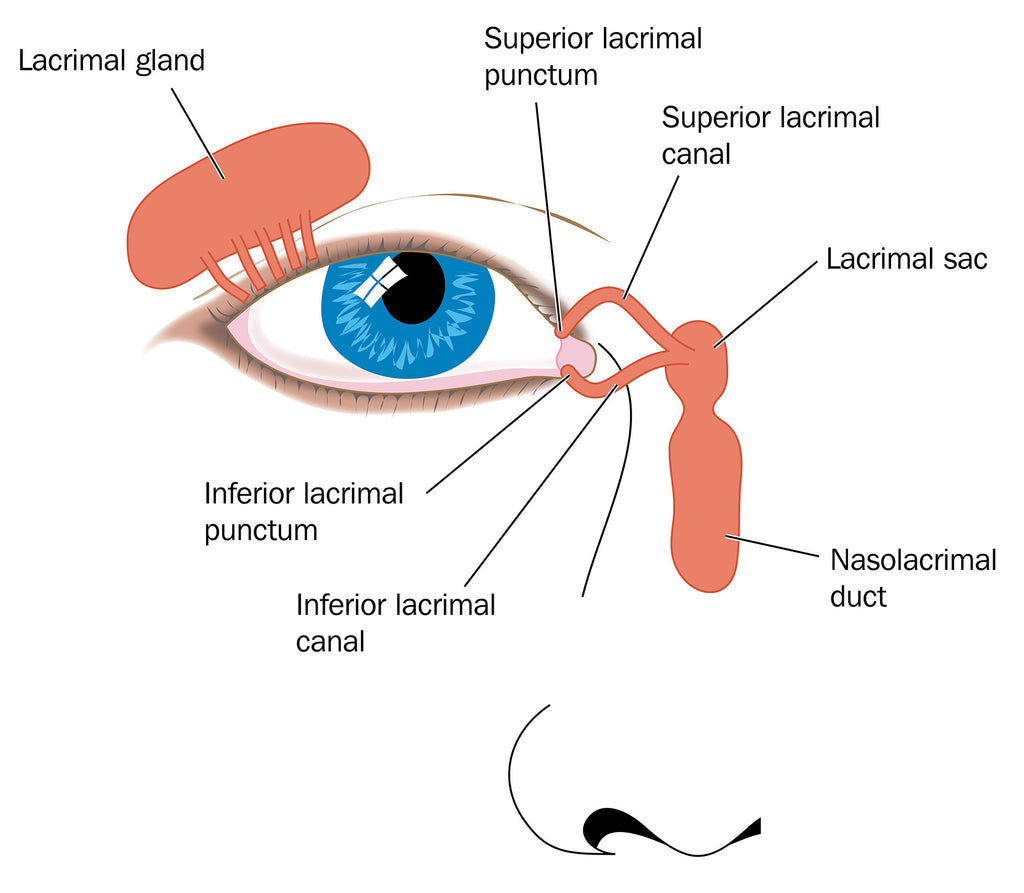The tear duct begins at the lacrimal puncta, which are orifices located at the nasal ends of the eyelids, and ends with the nasolacrimal duct. When this tear duct becomes blocked, tears do not drain normally and can cause discomfort for those who experience it.

The treatment applied for the obstruction of the duct depends on the cause and the age of the affected person. However, it is important to note that this problem is almost always treatable.
Lacrimal duct involvement can occur at any age. In fact, it is quite common in infants as their tear ducts may not be fully developed at birth, making tear drainage difficult. This condition typically improves without treatment during the first year of life. In adults, lacrimal duct obstruction may occur due to injury, infection, or rarely, a tumor.
What are the symptoms?
Signs and symptoms of lacrimal duct obstruction include:
- Excessive and constant tearing.
- Recurrent eye infections or inflammation (conjunctivitis).
- Painful swelling near the inner corner of the eyelids.
- Crusting of the eyelids.
- Discharge of mucus or pus from the lacrimal puncta.
- Blurred vision.
What are the causes?

Lacrimal duct obstruction can occur at any age, as mentioned earlier, from birth to adulthood. The causes include:
- Congenital obstruction: This is a common cause among infants, as many are born with developing ducts that do not have a normal drainage system or have an abnormality in the duct.
- Age-related changes: As we age, the small holes in the eyelids through which tears drain can become constricted, causing blockage. Eyelid malposition typical of eyelid aging can also contribute.
- Infection or inflammation: Chronic infection or inflammation of the eyes, tear drainage system, or nose.
- Injury or trauma near the tear drainage system.
- Tumor: A tumor in the nose or any part of the tear drainage system can cause blockage.
- Cancer treatments: This is a possible side effect of chemotherapy and radiation therapy.
What are the treatment options?
The treatment options depend on the location of the obstruction or infection. If the area to be treated is at the lacrimal point:
- Treatment with cortisone-based eye drops: The first step to prevent further infection and possible surgical intervention.
- Puntoplasty: A surgical technique that involves enlarging the entry orifice, the lacrimal point.
However, if the area to be treated goes beyond the lacrimal point and is deeper:
- Lacrimal probing: Involves passing a probe through the tear duct via the lacrimal punctum. It can be performed in the office under topical anesthesia, except in children who may require general inhalation anesthesia.
- Dacryocystorhinostomy (DCR): A surgical procedure that can be performed transcutaneously, endonasally, or transcanalicularly. The objective is to permanently establish communication between the lacrimal sac and the nasal cavity by creating a rhinotomy.
Our oculoplasty specialists are available to answer any questions or provide clarification on the above subject. So, if you are experiencing tearing or suspect an infection in the lacrimal punctum, do not hesitate to contact us.



